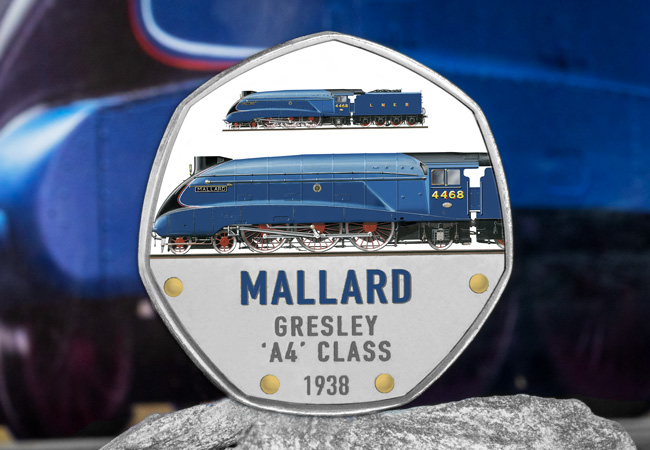The Need for Speed: 5 Facts About The Mallard
When it comes to pushing the boundaries of engineering and speed, one name stands out above the rest in the annals of railway history – the Mallard.
This iconic steam locomotive holds a special place in the hearts of enthusiasts and historians alike. Join us as we delve into the story of the Mallard and uncover five fascinating facts about this legendary machine.

Credit: G-13114 at English Wikipedia, CC BY-SA 4.0
The Record Breaker
The year was 1938, and the quest for speed was on.
The Mallard took centre stage when on July 3rd of that year, it embarked on a mission to break the world speed record for steam locomotives.
Rocketing along the East Coast Main Line, near Grantham, the Mallard reached an incredible speed of 126mph, breaking the record previously held by Germany’s DRG’s Class 5 Locomotive that had reached 124.5mph in 1936.
And the Mallard’s world record still stands to this day.
A plaque has been mounted on its side to commemorate its historic achievement, proudly displaying its maximum speed of 126mph.

Credit: Alan Wilson at English Wikipedia, CC BY-SA 2.0
Designed for Speed
The brainchild of Sir Nigel Gresley, the renowned chief mechanical engineer of the London and North Eastern Railway (LNER), the Mallard was built at the Doncaster Works.
Gresley incorporated several features to maximize speed, including a streamlined body and a three-cylinder design for greater power and efficiency.
A Train of Firsts
The Mallard was not only a speed demon but also a pioneer of innovative technologies.
It was the first locomotive to be fitted with a Kylchap double blastpipe and chimney, which significantly improved steam flow and enhanced performance.
Additionally, it was one of the first locomotives to be painted in the iconic LNER garter blue livery, making it instantly recognizable.
A Legacy Preserved
Today, the Mallard is part of the National Collection, residing in the National Railway Museum in York. Following a restoration project which brought the Mallard back to its former glory, the magnificent locomotive is a star attraction.

Credit: G-Man at English Wikipedia, CC BY-SA 3.0
Links to Ornithology
Gresley had a keen interest in birds and birdwatching and as such many of the locomotives in the A4 class were named after birds.
Including the Mallard, Falcon, Golden Eagle, Sparrow Hawk, Kingfisher, Wild Swan and Guillemot to name a few…
Yours FREE: The Mallard Commemorative
Today you can own the first issue in the British Railway Heritage Collection – The Mallard Commemorative – for FREE. You’ll only pay postage.
The Mallard Commemorative is the first in a collection celebrating Britain’s Railway Heritage – with each issue featuring an intricately illustrated locomotive from the annals of railway history.
By ordering your commemorative today, you have the chance to trial the British Railway Collection for FREE (+postage) with absolutely no obligation to continue collecting if you don’t want to.
Introductory Offer
The Mallard Commemorative is an Introductory Offer for the British Railway Heritage Collection. Each month, you’ll receive four commemoratives for £25.00 (+p&p). You’ll also receive your FREE Presentation Album to house your collection. You can cancel your subscription at anytime.


My Father worked on this train. I have a picture of him net to the train.
I first heard of this iconic train from my late husband, He was trained on these trainsat Toton Sidings in Stapleford Nottingham, it was in the years between 1987 To 1999. That learnt about the Mlard and it’s sister train which was painted in all grey these trains along with the Flying Scotsman would come into Toton sidings to have a check-up,and I would go over to Toton across the fields from Long Eaton, in Derbyshire to meet him, after work and to be shown the trains while they were being given the all clear for them to leave and return to York, where they are kept in all their glory my late husband would be in his element if he and his older brother were still alive.